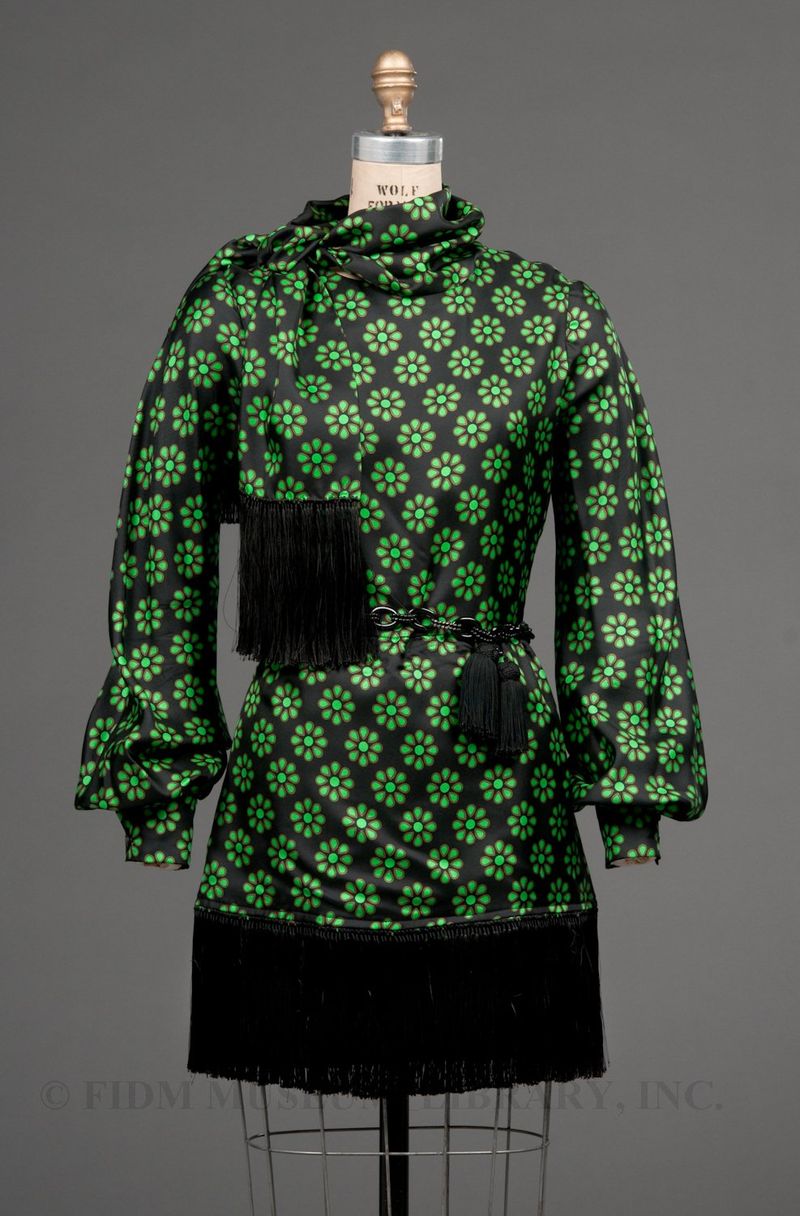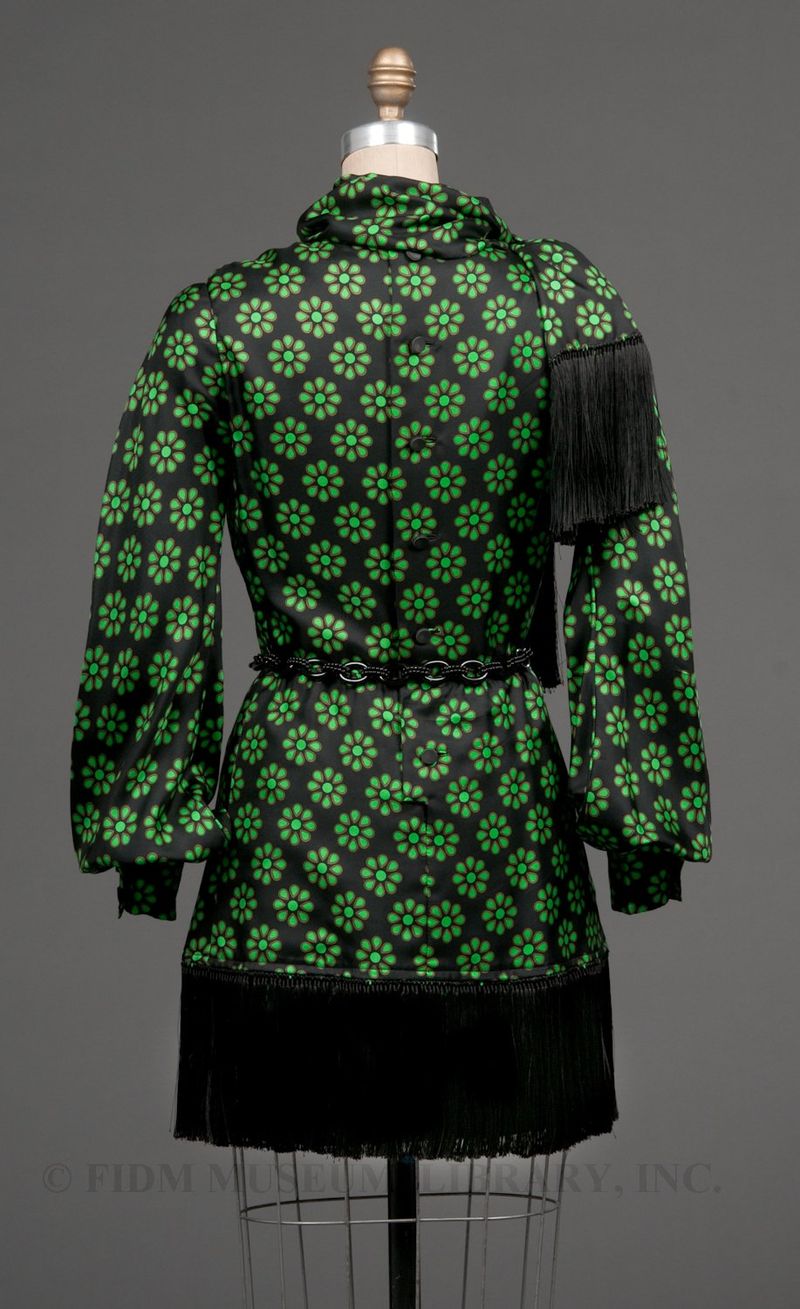In the late 1960s, the disaffected youth of the Left Bank (or "Rive Gauche") neighborhood of Paris trawled the city's open-air flea markets looking for romantic embellishments like fringed shawls, Indian jewelry, and antique lace. French designers began to "take this costumey rich mood and raise it up to couture," but risked having their clothes dubbed "hippy" in the process–a term that simultaneously suggested intellectual, moral, and material poverty. "No doubt the lesser houses will be sewing on all the lace and feathers and fringe which the suppliers are reportedly supplying by the bagful," Women's Wear Daily sniffed in January 1968, as Parisian couturiers prepared their spring collections. "The better houses, let's hope, will let their new, free, underground spirit lead them . . . to the essence of the whole bit: Beautiful Individualism. . . . What, after all, are the hippies creating with their extravagance but a pauper's notion of Luxury?"1
 Dress and Belt
Dress and Belt
Yves Saint Laurent, Paris
Spring/Summer 1968
2003.40.35AB
This fringed silk minidress from Yves Saint Laurent–a young couturier so attuned to street fashion that he had launched a ready-to-wear line, Rive Gauche, in 1966–epitomizes what The Chicago Tribune called "the new come-hither look" for Spring 1968. "That slippery, dancing fringe is the key to the new sexy fashions," the Tribune noted, in reference to a photo of a very similar model. "St. Laurent draped one slithery little print and bordered it in black fringe: The look spelled out the 1940s sensuousness of Rosie the Riveter on her night off."2 The swinging, swaying fringe at the hem, belt, and attached scarf danced–alternately concealing and revealing–as the wearer moved to the beat of her own drum. Saint Laurent repeated the fringed hem on a velvet minidress in his Rive Gauche collection the following season; Vogue extolled the allure of "the fringe swinging against sheer black leggy legs."3
Within a year, the sleek, sensual "fringe binge" had conquered fashion. It no longer evoked the boudoir alone; fringed leather garments often incorporated Native American influences. In a fringe-themed spread in the August 1969 issue of Vogue, British model Penelope Tree–"whose great fringy eyes have, by now, become household eyes on two continents"–modeled fringed dresses, tunics, ponchos, boots, belts, and bikinis by Bonnie Cashin, Paraphernalia, and Giorgio di Saint'Angelo. "Fringe, more fringe, even the fringe has fringe. Fringe all over clothes, maybe a fantasy fringe wig of ribbon or yarn."4 It may have been hippy, but it was undeniably chic.
1Women's Wear Daily, January 4, 1968.
2The Chicago Tribune, February 26, 1968.
3Vogue, September 15, 1969.
4Vogue, August 1, 1969.



Every woman has a truly great era in her life and mine was 1963-69 inclusive. Towards the end of that era, my favourite designer was definitely Laura Ashley. So now I wonder why the more elegant Yves Saint Laurent was not well known by my contemporaries back in 1966. Too expensive for ordinary university students? Too refined?
Thanks for the link
Hels
http://melbourneblogger.blogspot.com.au/2015/05/laura-ashley-cool-1960s-and-my-life.html